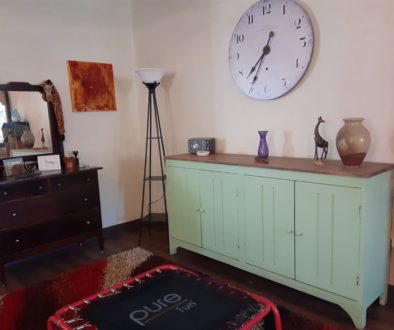Color in the classroom
Sir Isaac Newton, in 1704, said that color comes from light, and is the result of physics. Well, a young questioning Johann Wolfgang von Goethe questioned Newton’s conclusions considering color beyond the scope of science, but psychology.
If you’re anything like Goethe, you will notice that colors have relationships and that our perceptions of and reactions to a color can vastly differ, or highly resemble each other’s reaction.
Every time we pick a color for our child’s room, or the kitchen, we are considering how the color is going to make us feel which relates right back to Goethe’s theory of color and interior decorators know who to credit first.
More teachers are starting to realize that color, just as much as lighting, furniture arrangement, choice of curriculum etc. highly influences learning. If you have ever been to a Waldorf school, you know this to be true. Each age level is assigned a color for their classroom, based on decades of scientific research. And not only are the colors carefully chosen, but the method of painting these colors onto the wall is a just as much a conscious effort.
However, a lot has happened since the 1700’s and culture has taken over color theory by storm. For example, in many parts of the world, pink is for girls and blue is for boys. This is a relatively recent development in our world. Additionally, people’s faces crinkled when I told them I had chosen ‘deep rose’ as the color for my kindergarten. This is because some cultures have assigned the color red to anger, or that of triggering a lot of energy.
Waldorf classrooms see color as the indigenous Hawaiians (Kanaka Maori) see a rainbow.
The following is completely sourced from the Honolulu Waldorf school, and falls in line perfectly with everything I have read: When a rainbow appeared in the sky, the people declared that a divine presence was near and that it was a sign of “heavenly footsteps” coming to light on the earth. Many cultures, including the Judeo-Christian tradition, see the naturally occurring spectrum of colors as a “token of the covenant between God and man,” between the spiritual and the physical. Clearly, color is a bridge between our inner soul life and the outer physical world, for we say we are “feeling blue,” “seeing red,” behaving cowardly or “yellow,” being “green with envy,” “in a black mood,” or “in the pink.” Rudolf Steiner, the founder of Waldorf education, said: “Color is the soul of nature … and when we experience color we participate in this soul.”
Color is the emotional life of the natural world and if we can get beyond just looking at it as though it were mere gradations of gray and truly experience the wonderful visual sensations all around us that we call color we would then be intimately engaged with this living being, long referred to as Mother Nature, and more recently as Gaia—the living planet.
If we look into a Waldorf school classroom we see the deliberate and consciously considered use of color. Although not every Waldorf school is exactly the same in its choice of colors there is often a general consistency based on a response to the stages of child development.
For instance, in the nursery, kindergarten, and early grades, a soft, warm, pink tone is usually selected for walls and curtains because of its gently active and supportive quality. Pink is a loving, innocent color, decidedly feminine in character. Therefore, it is a natural color choice for the daily embracing of this age group.
The Waldorf classroom colors evolve from these warm, reddish tones in the early grades, through energetic orange/yellow around third grade, into the middle spectrum greens around fourth and fifth grade. It is here at the half-way-point of childhood that a kind of balance is achieved just before the onset of puberty. Green is the balanced color between light and darkness, and meets this age group in a harmonious way. From sixth grade on into the high school, various shades of blue dominate, and even lavender, lilac, and violet tones are indicated for the more inwardly active, thoughtful work of the upper school adolescent. However, craft rooms are often appropriately painted with warm colors, and spaces for eating are aided by appetite sympathetic golden-orange colors.
The interior colors in a Waldorf school are meant to support the child’s general phase of development at the same time as to enhance the educational experience for the particular grade level. Each classroom is a unique space for a specific age group and its activities. Therefore, each classroom wears a color appropriate to that space, the age of the students, and what generally takes place in it. Now if you look around at most state and other independent schools there is often a one-color-fits-all scheme, generally in shades of institutional green. This is simply not the case in a Waldorf school, or Wah’ -Sha Academy.
Another important aspect to the color environment in a Waldorf school is the transparency of color. The color treatment, called lazure, is not a standard, industrial flat paint but a medium that involves several watercolor-like applications veiled over each other to create rather subtle hue variations as well as a translucent effect. The reason for this is that with a lazured room, one does not experience the boundary of the wall as abruptly as with the flat painted surface. It is as though one can “breathe” beyond the surface of the wall and not feel as contained or bound by the room’s walls.
Waldorf schools, hospitals, and clinics, retirement homes and therapeutic communities, restaurants, and shops, as well as private residences, have used this lazure technique for its beneficial quality of making one feel less trapped.
The color chosen for our kindergarten is a deep rose, though, when applied as a lazure style, and next to the orange, looks a little ‘peachy.’ Peach is a warm, nurturing, heart-felt color, inviting and accepting. In nature, one sees nuances of this color in flower blossoms, sandy beaches, sunrises and sunsets. It is similar to the color that every newborn child reveals on the palms of their hands and the soles of their feet, no matter what their race. This is the color to which our students will enter the classroom.
Dark blue is almost an exact complementary color to the lighter peach tone. It is a cool, reserved tone that expresses thoughtfulness, deliberation, introspection, and even devotion. It is a color that harkens to the sea and the sky, and is what is chosen in the upper grades. Although these two colors are strong in contrast, striking and bold, their combination is warm and welcoming, yet alert and wakeful. These are colors that serve high school students so they can meet their community and protect their environment with strength of heart, intelligence, and courage for the future.






